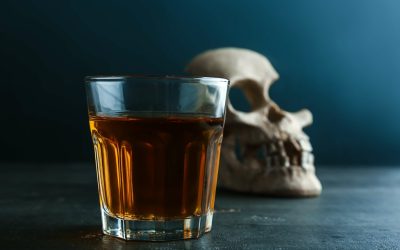Alcohol is linked to a number of serious health conditions like cirrhosis and heart failure. Heavy alcohol use also has many effects on the appearance of skin, hair, and fingernails. Alcohol https://www.3dgame3d.com/MofD.php causes blood vessels to enlarge, which may make them more prone to rupture. Rhinophyma is a form of rosacea that affects the color and appearance of the nose and surrounding skin.

What Is Alcoholic Nose (Rhinophyma)?
It seems to involve a mix of problems with how blood vessels and nerves work, along with how the immune system responds naturally in the body. In the early stages, https://suzuki-club.ru/members/73364/ treatments involves medications, but in the advanced stages, it involves surgery. There are many different surgical options that use plastic surgery techniques.
Find Help for Alcohol Use at Vertava Health
Of course, avoiding alcohol isn’t always easy—especially for long-term drinkers. Ria Health offers a proven at-home treatment to help you limit or stop your consumption of alcohol. You set your own personal goal, and we help you achieve it with coaching, medication, and other tools and resources. While drinking may not cause “alcoholic nose,” getting help to quit drinking can make the condition much easier to manage. An alcoholic nose, often called a whiskey nose, drinker’s nose, gin nose, or gin blossom nose, is a common way to refer to a large purple-tinted nose.
The Link Between Alcohol and Rosacea
- There are many different surgical options that use plastic surgery techniques.
- Or you may have an alcohol allergy, a stronger reaction that involves the immune system.
- If you’re looking for information about the condition known as alcoholic nose or drinker’s nose, here are answers to some of the most frequently asked questions.
- Alcohol aggravates symptoms of rosacea because drinking enlarges the body’s blood vessels.
- However, some conditions may require treatment beyond our capabilities, and we reserve the right to medically discharge a patient for a higher level of mental health care.
- We want to give recovering addicts the tools to return to the outside world completely substance-free and successful.
If you drink alcohol while taking these medications, you can experience alcohol intolerance. Rarely, severe pain after drinking alcohol is a sign of a more serious disorder, such as Hodgkin’s lymphoma. In some cases, reactions can be triggered by a true allergy to a grain such as corn, wheat or rye or to another substance in alcoholic beverages. Having a mild intolerance to alcohol or something else in alcoholic beverages might not require a trip to a doctor. Simply avoid alcohol, limit how much you drink or avoid certain types of alcoholic beverages.
Can You Mix Ativan (Lorazepam) and Alcohol? Plus, 4 More FAQs About This Risky Combination
All too often, the stigma of alcoholism and addiction leads to discrimination, avoidance, and rejection of people struggling with this disease. Rhinophyma is not directly caused by alcoholism or regular alcohol consumption. Another topic about alcohol addiction that http://www.extremeplanet.ru/video/Right+Brain+Left+Brain isn’t covered is the prevalence of binge drinking. However, it can be a critical first step in the addiction recovery process. Supervision can last from a few days to more than a week, and typically takes place in a hospital or a specialized alcohol detox facility.
Can Alcohol Damage Your Nose?
The main goal is to facilitate recovery and a better life for anybody who asks for help. The misconception that rhinophyma equals alcoholism is an outdated stereotype that can breed negative self-esteem and social anxiety. It can also prevent those actually suffering from alcoholism from getting the help they need. Take the first step toward addiction treatment by contacting us today.
- The transition from casual use to abuse is often a gradual one, and may not be immediately evident.
- Treatment can vary depending on the severity of your addiction but typically includes a combination of detox, inpatient care, support groups and sober living aftercare.
- If you’re concerned about the effects of alcohol on your nose, it’s essential to talk to your doctor.
- There are four stages of rosacea, and rhinophyma occurs in the last, or late, stage.
Not Sure How to Quit Drinking? Here’s Your Guide
- In some cases, reactions can be triggered by a true allergy to a grain such as corn, wheat or rye or to another substance in alcoholic beverages.
- Contact your doctor right away if you have any signs of infection or other concerns about how your skin is healing.
- Because alcoholic nose and alcoholism are not officially connected, it is hard to say that alcoholic nose points to an addiction.
Standard use may be considered a drinking problem once alcohol begins to negatively and overtly affect the drinker’s life. While alcohol may not be a cause of drinker’s nose, drinking alcohol can still affect your appearance. Primarily, alcohol is a diuretic that dehydrates the entire body, including the face. Therefore, by stripping the face’s skin of moisture, alcohol contributes to the appearance of wrinkles and saggy, dry skin. Further, alcohol widens facial pores, allowing blackheads and whiteheads to form, which can contribute to acne.


While alcohol nose does not directly imply addiction, it can be a visible manifestation of long-term alcohol abuse for some people. If you or someone you know struggles with alcohol addiction, The Hope House can help. Later, this condition advances to vascular rosacea, which involves swollen blood vessels and redness. It later progresses to acne rosacea and causes inflammatory breakouts. Once acne rosacea progresses to rhinophyma, the skin covering the nose increases in size and the tip of the nose expands. Rhinophyma is a skin disorder that causes the nose to become enlarged.
Even a single alcoholic drink can cause flare-ups for many people with this condition. A survey by the National Rosacea Society found that red wine was the most common culprit, followed by white wine and beer. Because alcohol dilates blood vessels and damages the vascular system, it can aggravate rhinophyma and other types of rosacea. If you develop rhinophyma, your nose may appear red, large, and even bumpy or bulbous. The visual side effects are most obvious on the tip and lower part of the nose, since the actual bone structure is not affected by the condition.

